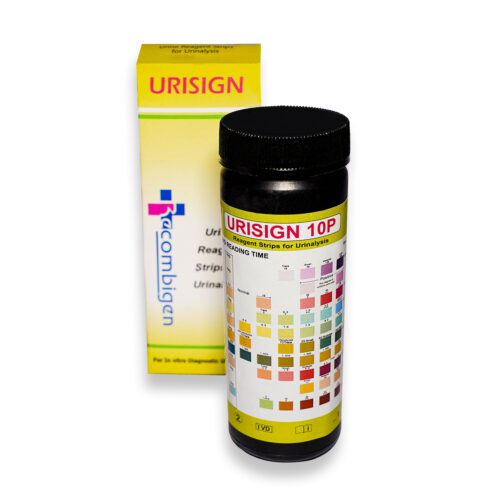Urea UV (2P Kinetic)
₹1,240.00 ₹780.00
| Methodology | Urease-GLDH UV Kinetic |
| Sample Type | Human Serum or Plasma |
| Number Of Reagents | Two Liquids -Ready-To-Use |
| Test Time Required | 90 seconds |
| Pack Size | 2*50ml |
The estimation of urea in serum or plasma is commonly performed in clinical laboratories to assess kidney function and protein metabolism. The UV-KINETIC method is one of the techniques used for this purpose. Here’s an overview of the test procedure:
Principle: The UV-KINETIC method relies on the enzymatic reaction between urea and the enzyme urease. Urease catalyzes the hydrolysis of urea into ammonia and carbon dioxide. The ammonia produced in the reaction reacts with a specific reagent to generate a colored product. The intensity of the color formed is directly proportional to the concentration of urea in the sample, and it can be measured using a spectrophotometer at a specific wavelength.
Test Procedure:
- Prepare reagents:
- Urease reagent: Contains urease enzyme.
- Color reagent: Contains a specific reagent that reacts with ammonia to produce a colored product.
- Sample preparation:
- Collect the serum or plasma sample from the patient.
- Centrifuge the sample to remove any particulate matter.
- Transfer the clear supernatant (serum/plasma) to a clean test tube.
- Test execution:
- Pipette a suitable volume of the sample into a cuvette.
- Add the urease reagent to the cuvette and mix thoroughly.
- Incubate the cuvette at a specific temperature for a defined period to allow the urea hydrolysis to occur.
- After the incubation, add the color reagent to the cuvette and mix well.
- Immediately place the cuvette into a spectrophotometer set at the appropriate wavelength for urea measurement.
- Measure the absorbance of the colored product and record the value.
- Calibration:
- To determine the concentration of urea in the sample, a calibration curve is prepared.
- Prepare a series of urea standards with known concentrations.
- Follow the same procedure as described above for the standards.
- Measure the absorbance of each standard and plot a calibration curve by plotting the absorbance values against the corresponding urea concentrations.
- Calculation:
- Using the calibration curve, determine the concentration of urea in the sample based on its absorbance value.
It’s worth noting that specific instructions and details may vary depending on the assay kit or laboratory protocols used. It’s important to follow the manufacturer’s instructions or consult the laboratory’s standard operating procedures for accurate and reliable results.
| Weight | 0.0168 g |
|---|---|
| Dimensions | 12 × 4 × 09 cm |
You must be logged in to post a review.

 Rapid Diagnostic Products
Rapid Diagnostic Products Serology Products
Serology Products Clinical Lab Accessories
Clinical Lab Accessories OTC Products
OTC Products Water Quality Test Kit
Water Quality Test Kit 












Reviews
There are no reviews yet.